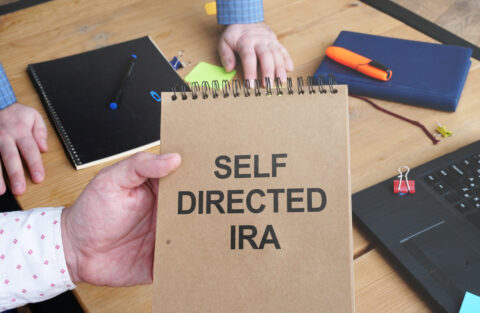Does the thought of opening a self-directed IRA feel scary or complicated to you? Some people miss out on the massive return potential of a self-directed IRA because they don’t understand how it works.
But if you learn how a self-directed IRA works and how to open one—you’ll be equipped to take massive steps toward the retirement of your dreams.
The first thing to know about how a self-directed IRA works is that you’re responsible for making it happen. It gives you more control over your investment than a non-self-directed IRA.
Here are the basic steps to open a self-directed IRA:
- Decide between a Traditional or Roth IRA
- Choose an investment
- Fill out a Direction of Investment (DOI) form
- Wait for the trustee/custodian to process your investment
- Manage your investment within your IRA
- Plan your retirement
1. Decide Between a Traditional or Roth IRA
Just like a non-self-directed plan, a self-directed plan allows you to choose between a Traditional IRA (tax-deferred) or Roth IRA (tax-free). Your best option will depend on your tax bracket now and in the future.
For example, if you foresee dropping down to a lower tax bracket by retirement, you’ll want to invest in a Traditional IRA. The Traditional option will allow you to completely avoid paying the more-expensive tax that your contributions would be subject to while in a higher tax bracket. Instead, you’ll only pay a less-expensive tax when you withdraw your retirement money due to your lower tax bracket.
But if you think you’ll rise up to a higher tax bracket by retirement, you’ll want to invest in a Roth so that the taxes you pay are already taken out of your contributions while you’re in the lower tax bracket. Then you’ll completely avoid paying the more-expensive tax of your higher tax bracket when you withdraw your retirement money.
Talk to a financial advisor to learn which option is best for you.
2. Choose an Investment
You have the freedom to invest in a wide range of assets that provide high returns on your money. But make sure you study up before you select your desired assets.
Keep in mind that, for a self-directed IRA, the IRS prohibits any “self-dealing” transactions—where the asset purchased through your IRA is used by you, your family, or anyone who would qualify as a conflict of interest.
For example, you can’t invest in a real estate property that is or will be owned by the family. But if you love the idea of investing in real estate, you could find available opportunities if you:
- Talk to a real estate agent
- Contact a real estate investment management firm
- Attend real estate, and investment groups
- Drive around an up-and-coming neighborhood
Before you settle on any type of investment, talk to your tax attorney or financial advisor to make sure you understand how the investment works, the potential risks, and how returns are generated.
3. Fill out a Direction of Investment (DOI) Form
To start a self-directed investment, you need to fill out a Direction of Investment form. A DOI form is used as part of the process to purchase an asset through your IRA and provides information including:
- General personal information
- What method you’ll use to fund the transaction
- How much money you’ll invest
- Where to send the funds
- Description of the asset
The DOI form is one of several other documents you’ll need—which all must be titled in the name of your IRA, rather than your name.
4. Wait for IRA Trustee/Custodian to Process Your Investment
Once you provide the proper documentation, the trustee or custodian of your IRA will be able to use your investment money to process the transaction with the grantor of your asset. After the purchase is complete, your IRA will own the asset.
5. Manage Your Investment Within Your IRA
For as long as your IRA owns your investment, all transactions related to the investment must be done through your IRA.
That means all expenses must be paid from your IRA and all income and profits must be returned directly back to the IRA. Otherwise, you risk losing the tax advantage.
For example, if your asset is in real estate, the expenses you’ll pay toward a real estate investment property will come out of your IRA. Once the property is sold, the profits will go directly into your IRA.
6. Plan Your Retirement
The direction and duration of your self-directed investment depend on these main factors:
- Type of asset
- Your individual situation and desired outcomes
- Terms and conditions set by your investment manager
As long as it doesn’t break the terms you agreed to with your investment firm, you can choose to sell an asset and it will be removed from your IRA in exchange for the proceeds. You can also choose to distribute cash or assets from your account. Or you may want to save the asset for a beneficiary after death.
But always consult with a financial advisor or tax attorney before making a final decision.
Ready to Start Your Self-Directed IRA?
Are you ready to gain the highest possible returns for the future of your family? Enjoy a free consultation with one of our investment professionals to take your first step toward massively increasing your retirement wealth. Contact an investing professional today!



